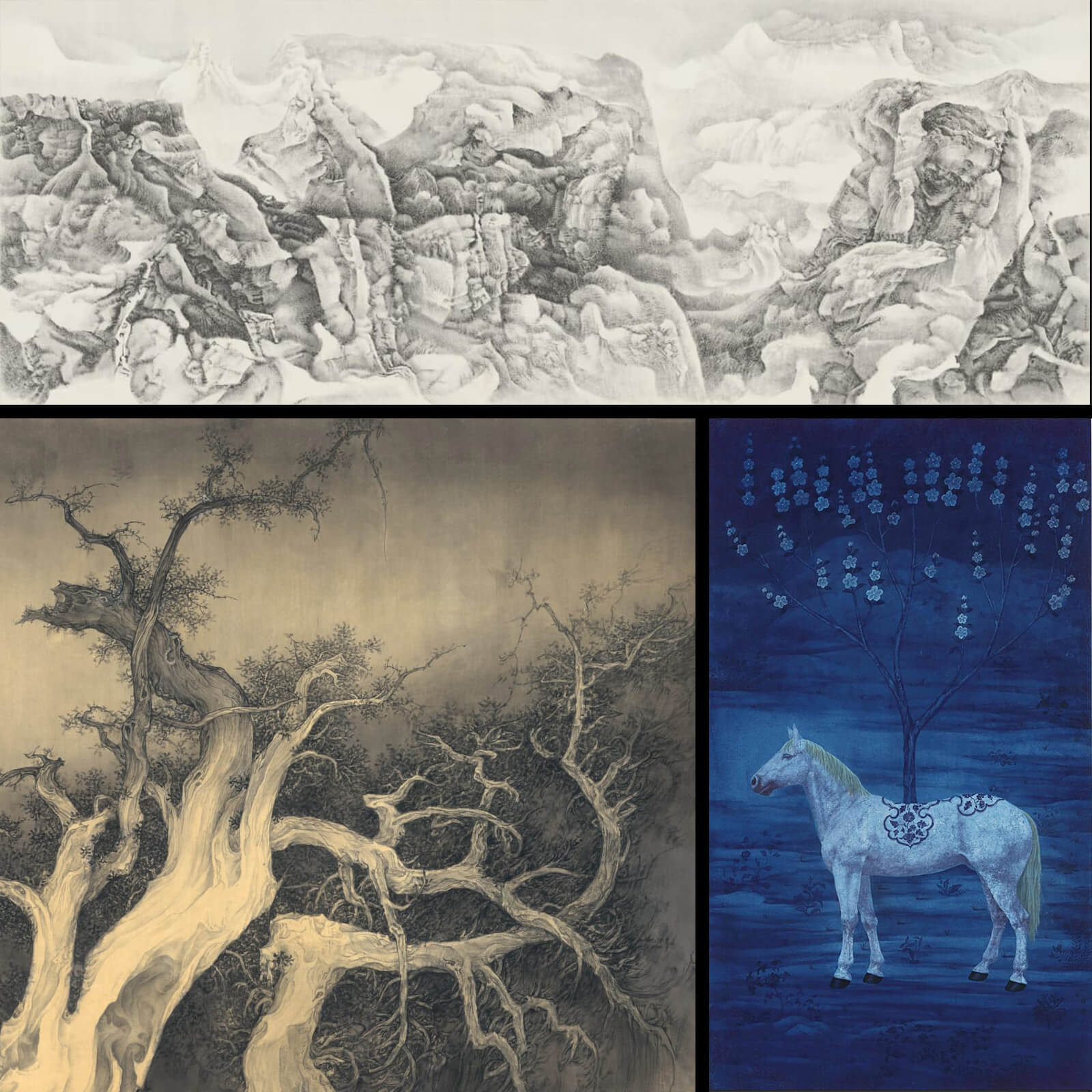Ink art holds a significant and central place in the contemporary Chinese artistic scene, maintaining deep roots in tradition while adapting to modern artistic trends. In China, Taiwan, and Hong Kong, ink remains a fundamental medium of expression, reflecting the historical and philosophical heritage of these cultures.
Traditional Chinese ink painting, known as “shui-mo” (水墨), is one of the oldest forms of art in Asia. Contemporary artists continue to explore this technique, drawing inspiration from Taoist and Buddhist philosophies, which emphasize harmony with nature and a minimalist approach to creation. Ink art continues to symbolize simplicity and spirituality, but modern artists often incorporate contemporary elements, experiment with abstract forms, or combine ink with other media.
In Taiwan and Hong Kong, artists follow similar trends, preserving the traditional features of ink art while expressing contemporary themes. Artists from these regions use ink to comment on globalization, cultural identity, and the relationship between tradition and modern life.
Overall, ink art remains central to the artistic practices of China, Taiwan, and Hong Kong, connecting past with present, while continually evolving to reflect contemporary trends and global issues.
In the photographs, you can see works by some of the most notable contemporary visual artists from China, Taiwan, and Hong Kong who use ink as their main medium of expression today. See the descriptions of each photo individually for more information.
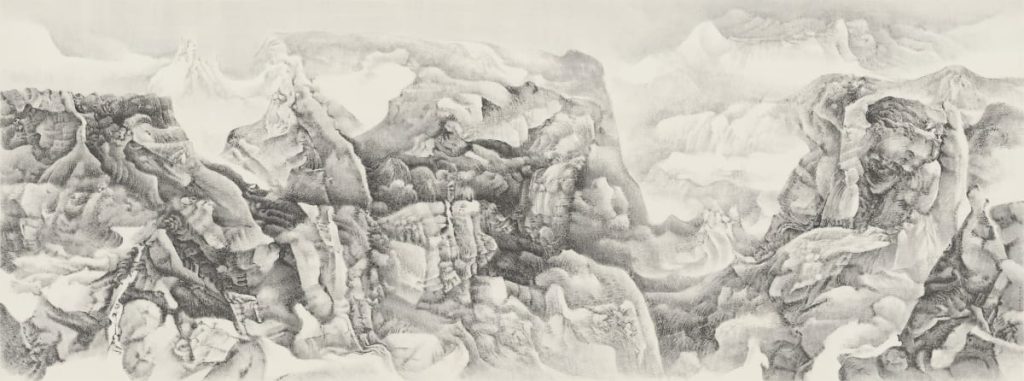
Liu Dan
Liu Dan is known for his skillful use of ink to create landscapes and flowers, combining Chinese tradition with European elements.
Li Huayi
Li Huayi draws inspiration from Chinese landscapes and combines classical Chinese art with Western influences, creating complex landscapes.
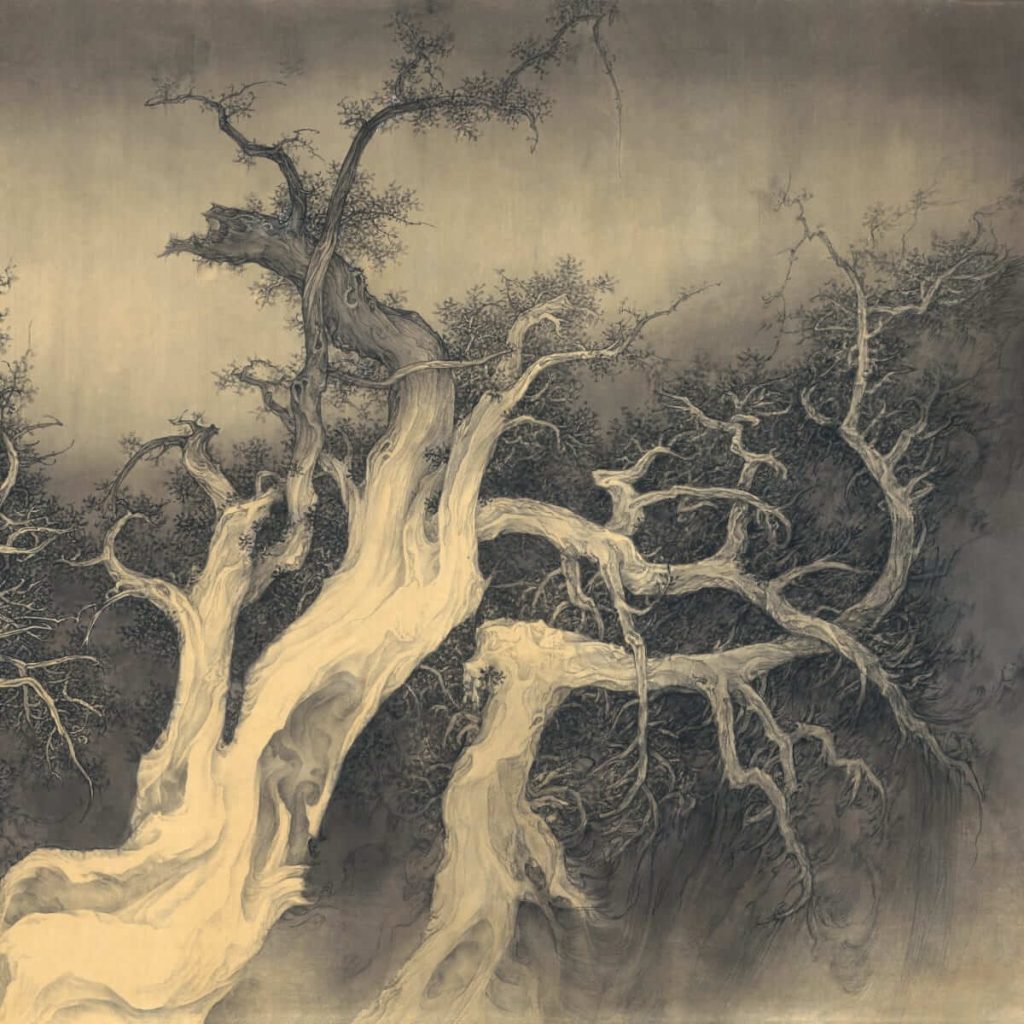
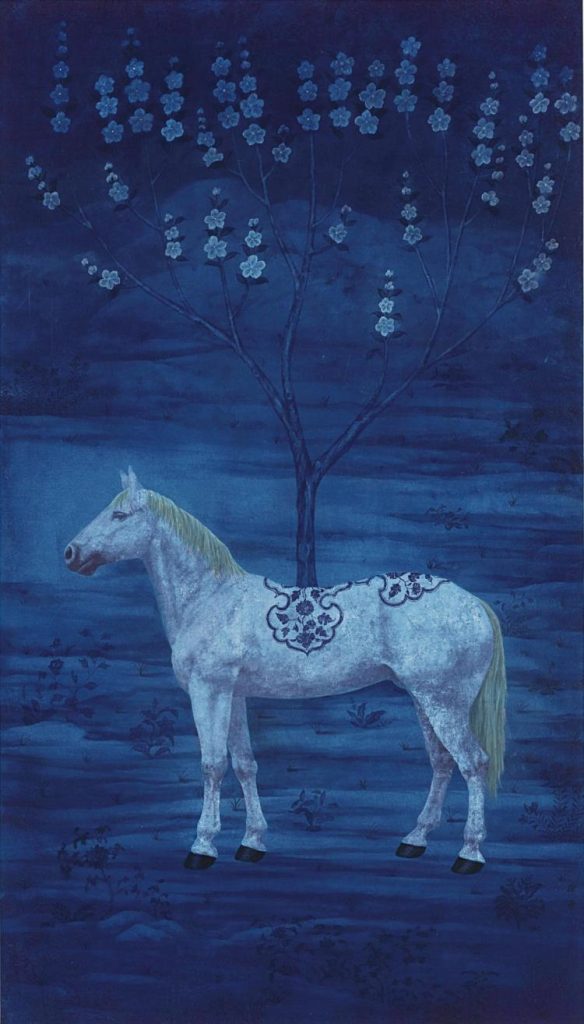
Xu Lei
Xu Lei combines traditional Chinese painting with fantastical elements, creating dreamlike landscapes that blend realism with imagination.
Wang Tiande
Wang Tiande combines ink and burning techniques to create works that connect tradition with modern elements.
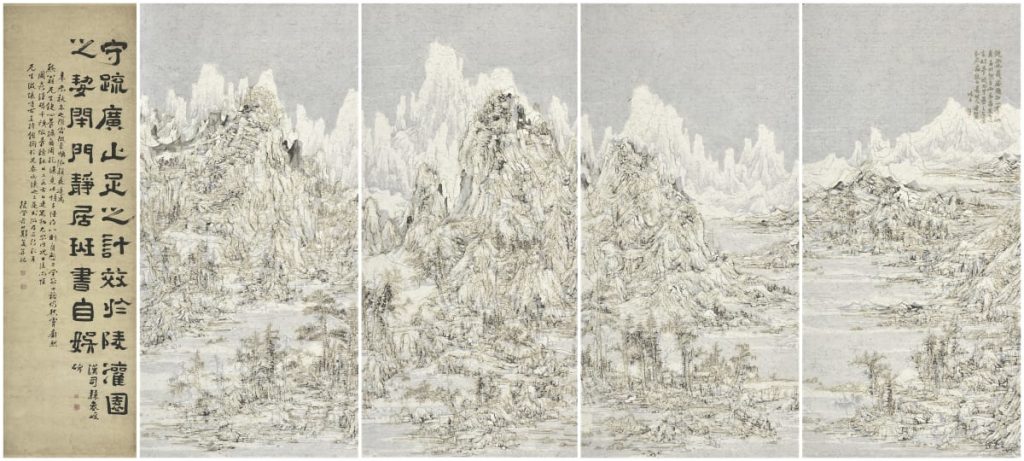
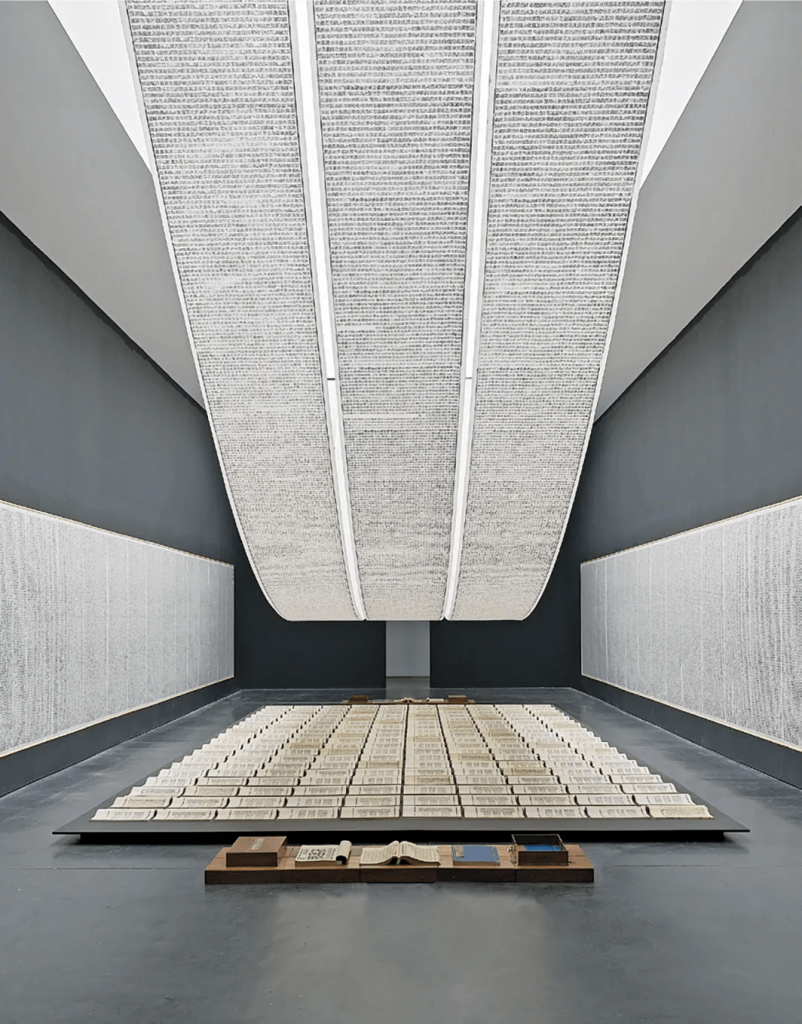
Xu Bing
Xu Bing is known for developing the technique of Square Word Calligraphy, which combines calligraphy with English letters.

